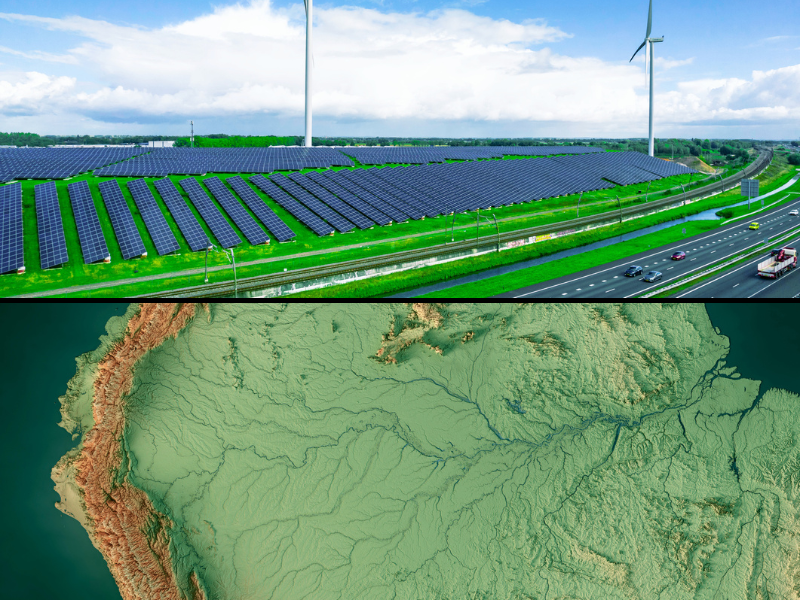YOU SHOULD SUBSCRIBE TO CLIMATE CHANGE WEEKLY.
IN THIS ISSUE:
- International Climate Conference Debunks Science and Policy Consensus Claims
- Video of the Week: Polar Bears
- Swiss Defend Democracy Against European Court’s Climate Ruling
- Average and Peak Summer Temperatures Warmer in the 1930s than in Any 10-Year Period Since
- Podcast of the Week: Climate Alarmism & Anti-Humanism – In The Tank #45
- Biden Administration Hopes to Restart Mothballed Nuclear Plants
- Climate Comedy
- Recommended Sites
Watch ALL the Presentations by the ALL-STARS of Climate Realism at the Archive of Heartland’s 15 Climate Conferences
International Climate Conference Debunks Science and Policy Consensus Claims

The Heartland Institute partnered with the Germany-based European Institute for Climate and Energy (EIKE) and the U.S.-based Committee for a Constructive Tomorrow (CFACT) to hold a two-day climate conference on June 14-15 in Vienna, Austria. This was the 16th International Conference on Climate Change; Heartland has either hosted or participated in all of them.
The speaker’s line up for the conference was outstanding, boasting some of the world’s top climate scientists, and economic and policy experts, including Heartland’s own President James Taylor, not long after a successful European trip during which he provided invited testimony on climate change to the European Union Parliament. Within days of Taylor’s presentation, the EU Parliament rejected a bill to require net-zero carbon dioxide emissions throughout Europe.
Since that time, new EU elections have been held, and a number of climate skeptics replaced Green party representatives in the EU parliament.
The climate conference was the first of its kind to take place in Austria, whose populist conservative Members of Parliament wield increasing influence within the EU Parliament.
As I write, videos of the conference sessions have not been posted; but below, I categorize and note some of the speakers and topics, and Taylor has provided brief descriptions of a few of the talks. On the science front, an international group of scientists, including Nicola Scafetta, Ph.D., Willie Soon, Ph.D., Nir Shaviv, Ph.D., and Henrik Svensmark, Ph.D., discussed the role the sun and cosmic rays play in warming and climate change. William Happer, Ph.D., described the role that clouds play in radiation transfer. Roy Spencer, Ph.D., discussed the idea that temperature extremes are becoming more common. Taylor, Craig Rucker, and Nobel Prize laureate John Clauser, Ph.D., each discussed how climate alarmists and the media are lying, either directly or through omission of key facts, to promote the idea of climate emergency in need of a big government fix—and discussed ways to successfully debate and debunk their claims.
Other researchers discussed the science and politics of energy and climate change, including the potential of different energy sources and how and why climate alarm is being fought in legislatures and the courts. They included such analysts as Marc Morano, Marcel Crok, László Csaba Szarka, Ph.D., Bernhard Strehl, Ph.D., Manfred Haferburg, Douglas Pollack, and Benjamin Zycher, Ph.D.
Below, Taylor briefly describes the content and impact of a few of the presentations, including his own.
To a packed house at the conference hall in Vienna, I (Taylor) set the stage for presentations by some of the world’s most accomplished climate scientists and climate policy experts. I explained how climate alarmism is a Trojan horse for the global left to consolidate money and power in global government institutions while depriving us of our most basic freedoms. After congratulating the audience on sending even more freedom-focused policymakers to the upcoming EU Parliament session, I noted how Heartland is working closely with EIKE and other public policy organizations and policymakers throughout Austria and throughout Europe. I gave a presentation on specific examples of climate change misinformation making the rounds in the establishment media. I then turned the floor over to presentations by participating scientists and policy experts.
“No chance” was the key takeaway from a presentation by Dr. Will Happer. Happer and a colleague, W. A. van Wijngaarden, Ph.D., published a paper in 2020 showing the atmosphere has nearly reached its carbon dioxide saturation point. Carbon dioxide impedes the flow of longwave radiation to space within a specific spectrum range. At current atmospheric CO2 levels of approximately 420 parts per million, atmospheric CO2 is nearly saturated, meaning nearly all potential warmth retention from atmospheric CO2 has already occurred, such that additional CO2 emissions will have almost no impact on global temperatures. During his presentation, Dr. Happer said there is no chance that the saturation effect he documented could be wrong. From the humble and affable Dr. Happer, that is as forceful a statement as you will ever hear. That is good news for people worried about future climate change, and should end the debate about any future climate change crisis.
In a subsequent one-on-one conversation that I had with Danish scientist Dr. Henrik Svensmark, he confirmed Happer’s assessment of the CO2 saturation effect, saying, “Dr. Happer is correct, CO2 saturation as described by Dr. Happer is a well-known and well-understood matter of science.
“Nobody with any basic understanding of atmospheric physics can claim it is wrong,” Svensmark concluded.
Dr. John Clauser, the 2022 Nobel Prize winner for physics, gave a compelling blow-by-blow takedown of climate alarmism. Among other things, Clauser emphasized that the United Nations Intergovernmental Panel on Climate Change (IPCC) and its computer models are spectacularly wrong in their assumptions about clouds.
Clauser pointed out that average cloud cover throughout the planet is approximately 67 percent. IPCC claims clouds have an albedo of 0.34, meaning they reflect approximately 34 percent of sunlight back into space, with 66 percent of the sunlight that strikes cloud tops reaching Earth’s surface. In reality, Clauser emphasized, cloud albedo is approximately 0.80. The sun is a variable star, meaning the output of solar energy varies a significant amount. Compelling scientific evidence shows solar output has increased significantly during the 120-plus years since the beginning of the 20th century. Drastically underestimating cloud albedo allows IPCC to underreport the impact of the recent increase in solar output on global climate and allows IPCC to claim a much greater impact from carbon dioxide emissions than is justified by sound science.
Wish I could have been there. I’ll update readers when the videos are posted, so you can view them at your leisure.
Source: EIKE
NEW: Get Climate at a Glance on your mobile device!
Video of the Week
For my entire life I’ve been told they are threatened by global warming, and could even go extinct on our watch. Turns out, this couldn’t be farther from the truth. Heartland Institute Research Fellow Linnea Lueken explains.
Read the brutal truth about how battery production for electric vehicles cause immense environmental destruction and human tragedy.
Swiss Defend Democracy Against European Court’s Climate Ruling

The democratically elected Swiss government has decided they will not impose the climate restrictions on their citizens demanded by a ruling of the European Court of Human Rights (ECHR).
In a case widely touted by the media as precedent-setting, more 2,000 Swiss women over the age of 64 brought a climate lawsuit before the ECHR, arguing the Swiss government was violating their fundamental right to life by not doing enough to tackle the climate crisis. In April, the court ruled in their favor, saying the government had to impose stricter climate goals and plans, requiring deeper emission reductions and more restrictions on fossil fuel use in the county.
“Switzerland, like many developed countries, has failed to meet targets to reduce planet-warming greenhouse gas emissions,” reports The Independent. “The case was touted to have set an international precedent for governments to be made legally accountable for inaction on the climate crisis.
“Climate groups said the ruling would establish that protecting the environment and human health from the spiraling adverse impact of the climate crisis was a human right and force governments to act,” The Independent said.
With the Swiss Parliament’s action The Independent notes, a quite different precedent may, in fact, be set.
“By rejecting the ruling, the Swiss parliament just set a ‘concerning precedent’ for how such legal action could go in the future, experts said, [with] Isabela Keuschnigg, legal researcher at the London School of Economics, say[ing] the move could ‘set a concerning precedent, undermining the role of legal oversight in democratic governance,’” The Independent writes.
During a June 12 session of parliament, Swiss lawmakers strongly criticized the ECHR’s ruling as “interference” in the country’s sovereign democratic government.
Although Andrew Cutting, a spokesperson for the Council of Europe, told Reuters that no member country has ever outright publicly refused to implement a judgment from the ECHR, governments have failed to comply with and implement approximately half of the most significant decisions issued by the court over the past 10 years.
It is unclear at present whether Switzerland’s Federal Council will comply with the ruling despite the parliament’s decision. The Independent notes that the government must inform the Council of Europe by October what steps it is taking to implement the ECHR’s decision. Maybe it could simply ignore that deadline, as the Swiss parliament has said the government should do with the court’s ruling.
Source: The Independent
Average and Peak Summer Temperatures Warmer in the 1930s than in Any 10-Year-Period Since

Using data from the National Centers for Environmental Information (NCEI), 24/7 Tempo produced a ranking of summer temperatures by decade from June through September, for 1895 to present. They looked at the NCEI’s data for each summer month over the past 129 years, and averaged them by decade, pulling out the high temperature year in each decade.
What the data show won’t surprise anyone who has followed Heartland’s long-time work using data to regularly debunk claims that this or that month, season, or year “is the hottest ever,” but it may shock those who have maintained an open mind but who have so far believed what alarmists are telling them.
The data show that the decade of the 1930s—not either of the first two decades of the 21st century, which have been declared the hottest ever by climate alarmists—registered the hottest summers, and the highest average summer temperature by year. The website 24/7 Tempo writes:
1930 to 1939, also saw a new average record of 85.73 degrees Fahrenheit in the summer of 1936.
Additionally, this decade had hotter summer months, bringing the average temperatures to between 83 and 85 degrees Fahrenheit. These higher-than-average temperatures meant a new average of 84.37 degrees Fahrenheit, up almost 2 degrees from the previous decade.
With an average over the decade of 84.37℉, the 1930s remain the warmest decade of summer temperatures on record. The second warmest decade is 2010 to 2019, with an average summer temperature of 84.06. The decade from 2000 to 2009, and 1950 to 1959, recorded the third and fourth highest summer average temperatures, respectively, on record.
The highest single year’s summer temperature was also measured in the 1930s: 1936, at 85.73℉. The second warmest single summer year was 2012 at 85.37℉; 1988 was the 3rd warmest summer year on record.
What the data shows is slight fluctuations from year to year, but no sustained warming trend, with no new summer records being set in the 2000s. Rather, temperatures peaked nearly 100 years ago, fluctuating slightly from year to year after that, but in general cooling for six decades, only to begin warming again in the 2000s. No temperature trend tracks the relatively steady rise in carbon dioxide emissions.
Source: 24/7 Tempo (Newsbreak)
Heartland’s Must-read Climate Sites



Podcast of the Week
Phoenix is hiring a “Chief Heat Officer,” in response to rising heat related deaths, which the city blames on climate change. The truth is most of those dying are homeless or drug addicts with underlying health conditions, people already in poor health. As far as Phoenix’s heat, that is due, not to climate change but the city’s massive growth and related increased Urban Heat Island effect. Responding to homelessness and drug use will do far more to prevent premature deaths in Phoenix than efforts to fight climate change or control the weather.
Subscribe to the Environment & Climate News podcast on Apple Podcasts, iHeart, Spotify or wherever you get your podcasts. And be sure to leave a positive review!
Biden Administration Hopes to Restart Mothballed Nuclear Plants

As part of its efforts to hit net zero targets, the administration of President Joe Biden is unexpectedly pushing the reopening of a number of nuclear plants that were previously decommissioned and mothballed. Nuclear power plants provide reliable power with almost no carbon dioxide emissions. Recently, a number of nuclear power plants have been shuttered or taken offline due to policies enacted by the federal and various state governments that made it more profitable for utilities to build and operate “renewable” wind and solar power facilities, despite their intermittency, instead of continuing to operate or go through the relicensing process for existing nuclear power plants.
Oil Price reports that U.S. Department of Energy (DOE) Secretary Jennifer Granholm recently told Reuters the Biden administration believes the increased use of nuclear power is necessary to reach its net-zero emissions reduction goals, but because the cost of building new nuclear reactors is time-consuming and expensive, reopening previously shuttered plants is an option on the table.
As part of that effort, in March, the DOE issued a $1.52 billion conditional loan to Hotec International to finance the restart of the Michigan-based Palisades reactor, which was closed in 2022. The Nuclear Regulatory Commission’s approval of a plan to restart the plant is one of the conditions of the loan.
Granholm indicated that the DOE was currently participating in discussions to make loans to reopen other recently closed nuclear plants, among them 12 reactors closed since 2013.
Source: Oil Price









